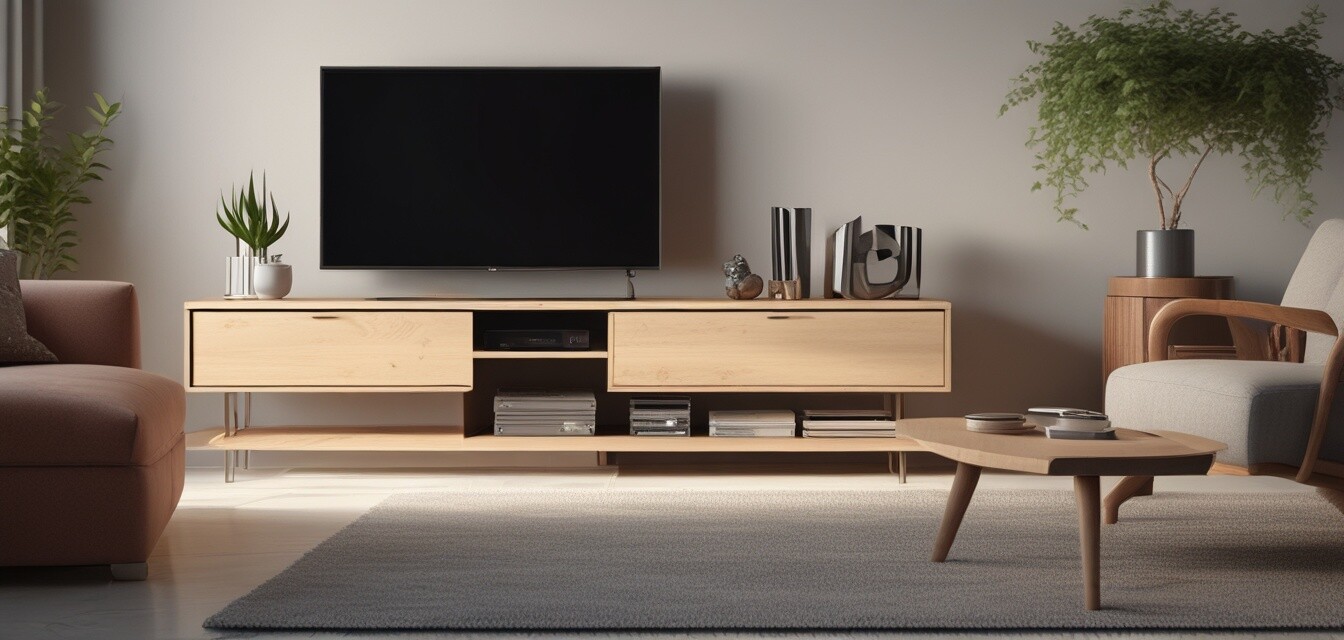
The Future of Furniture: Sustainability as a Standard
Key Takeaways
- Sustainability is increasingly becoming a vital aspect of furniture design.
- Consumers are demanding eco-friendly options, influencing market trends.
- Innovative materials are shaping the future of TV stands and other furniture.
- Choosing sustainable furniture not only benefits the planet but also enhances home aesthetics.
In recent years, the shift towards sustainability has permeated various sectors, but perhaps no industry reflects this change more significantly than furniture design. As consumers become more environmentally conscious, the demand for eco-friendly options in furniture, especially for TV stands, is growing. This article explores how sustainability is becoming a standard in furniture design and what it means for manufacturers and consumers alike.
Sustainability in Furniture Design: An Overview
The furniture industry has historically been associated with resource depletion and pollution. However, with the increasing awareness surrounding climate change, manufacturers are now prioritizing sustainable practices. This shift encompasses the entire lifecycle of furniture, from sourcing materials to production processes and even end-of-life disposal.
Materials Matter
When looking for sustainable furniture, the materials used are fundamental. Here’s a comparison of traditional versus sustainable materials used in furniture design:
| Traditional Materials | Sustainable Materials |
|---|---|
| Solid wood from unsustainable forests | Reclaimed wood or certified sustainable wood |
| Polyurethane foam with high VOC emissions | Bio-based foams or natural latex |
| Particleboard with formaldehyde adhesives | Plant-based or low-VOC adhesives |
| Plastic materials that are non-recyclable | Recycled plastics or biodegradable materials |
Consumer Trends Towards Eco-Friendly Furniture
Today’s consumers are not just looking for stylish furniture but also want to ensure their choices align with their values. Here are some emerging trends:
- Increased awareness: More consumers are considering the environmental impact of their purchases.
- Transparency: Brands that offer clear information about sourcing and manufacturing processes are favored.
- Longevity: There’s a growing preference for durable products that last longer, reducing waste.
- Design innovation: Sustainable design does not compromise on style; unique and aesthetic options are available.
Innovative Designs in TV Stands
TV stands are central to home entertainment setups, and their design is evolving. Here are some innovative ideas emerging in the market:
- Modular designs that can be customized according to space and need.
- Floating TV stands that maximize floor space while maintaining a sleek look.
- Multi-functional stands that combine storage and display features.
- Use of upcycled materials to create unique, one-of-a-kind pieces.
Impact on the Furniture Market
The push towards sustainability has implications for manufacturers and sellers in the furniture market:
- Pressure on traditional manufacturers to adopt sustainable practices.
- Opportunities for new brands that focus on eco-friendly furniture solutions.
- Change in supply chains to prioritize sustainable raw materials.
- Shift in marketing strategies to highlight sustainability features.
Benefits of Choosing Sustainable Furniture
Choosing sustainable furniture goes beyond a mere aesthetic choice. Here are the benefits:
Pros
- Better for the environment, reducing carbon footprint.
- Unique, stylish designs that stand out.
- Often healthier as they contain fewer harmful chemicals.
- Long-lasting quality, saving money in the long run.
Cons
- Potentially higher upfront costs compared to conventional furniture.
- Availability may be limited depending on the region.
Where to Find Sustainable TV Stands
For those considering a shift, here are some great places to shop for sustainable TV stands:
- Corner TV stands for maximizing space with style.
- Entertainment consoles that combine function with eco-design.
- Floating TV stands to create an illusion of space.
- Metal & Glass TV stands that offer a sleek modern look.
- Wooden TV stands that highlight natural beauty.
Final Thoughts
As sustainability becomes a standard in furniture design, consumers have a plethora of eco-friendly options to choose from. By opting for sustainable TV stands and furniture, individuals can contribute to a healthier planet while enhancing their home’s aesthetic. The future of furniture is undoubtedly promising, with a shift towards designs that marry functionality with environmental responsibility.
Stay Updated on Trends
For more information about eco-friendly living and the latest trends in furniture design, check out our News and Trends section.